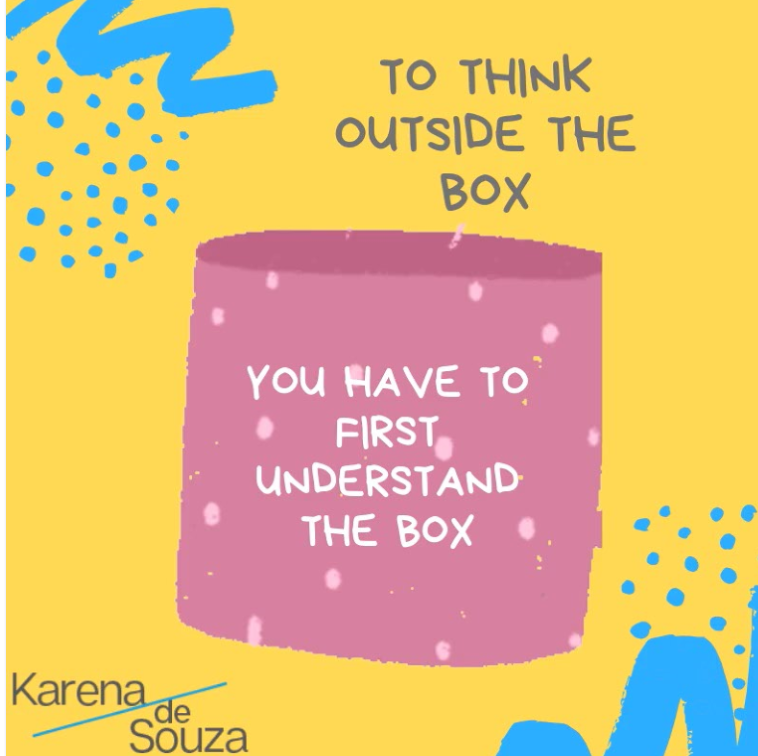
12 Nov Think outside the box
E32: Think outside the box. 2:34 min listen, 3 min read.
First figure out the box
In the previous episode, we talked about the value of critical thinking as an EQ skill, and the fact that there is a 4-step method that assists in nurturing it.
In his HBR article ‘A Short Guide to Building Your Team’s Critical Thinking Skills‘, Zarvana’s Matt Plummer set out four steps.
Mastery
As he described the step Execute, my mind went back to the concept of mastery. And Gladwell’s 10,000 hour rule in Outliers. And the idea of Automaticity in James Clear’s Atomic Habits.
Think outside the box
Isn’t that pretty much the definition for critical thinking?!
But you can only do that successfully, and with intent, if you first understand what is inside the box.
Training wheels for critical thinking
Educators & parents at a recent conference heard my thoughts on this topic:
“Think outside the box only works when you understand the rules, size and structure of your box”
Critical thinking is a journey – just like learning to ride a bike, or drive a car. The most important component is developing confidence that you can do this.
We have to be willing to teach – and young adults should be willing to invest in learning – the value in mastery, in routine, in rote. So that they can develop the confidence to be critical thinkers.
Start simple
Start with simple ideas:
- Following recipes shows us how proportions and taste profiles affect flavour, enabling us to substitute or get creative later
- Learning the basics of how to drive a car on local roads, lets us handle unusual traffic conditions later
- Understanding a manufacturing line or a set of bookkeeping routines, allows us to spot the anomalies
Autopilot
There are things that humans are (currently still) better at than automation and AI. All the routine tasks will be absorbed. In fact, autopilot is one such technology. But it only works while everything is still stable.
Preparing ourselves to think flexibly, to evaluate options and to take actions are all steps towards developing that wonder skill called critical thinking.
Captain Sully was able to move onto the outside the box options because he had repeatedly drilled regular take-off and landings, and a number of emergency landings. In that moment, all the fine motor skills were poised and ready to go. And he could harness his brainpower to evaluate choices.
Next steps for Gen Z, Millennials and more …
Parents, educators or employers, Millennials, Gen Z/Zoomers, what did you think?
- Does this change how we encourage K-8 to develop pre-critical thinking skills at school and at home?
- As someone in a job, or as a job seeker aged 16-60, where could you leverage this insight?
- Want more information? Follow the links in the World Economic Forum article ‘This soft skill will boost your productivity’
Related episodes in the Critical Thinking EQ series:
- E30: Sully & Critical Thinking is the first in the series, discussing some famous and other everyday examples
- E31: Why employers are searching for this skill. Looking at 2 articles, it reviews why employers are seeking out Critical thinking as an EQ skill.
Did this episode have you looking at critical thinking in a different way? If you found this information valuable, please share it with others, engage in the discussion on this site or on LinkedIn, and let us know by rating, commenting & following the podcast.



No Comments